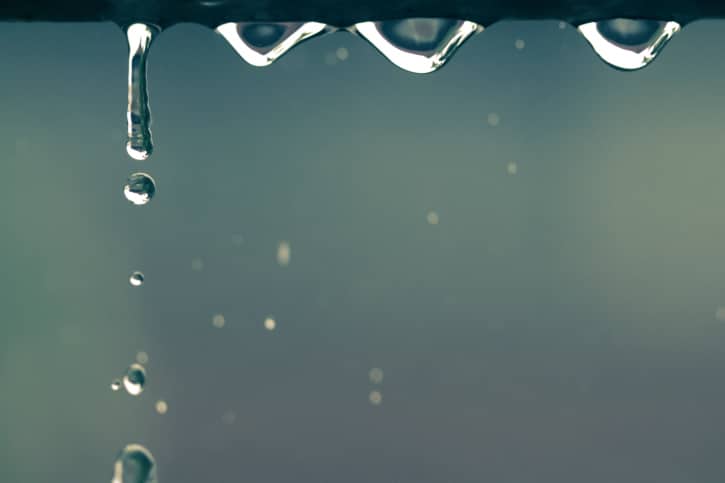
Wet insulation is inefficient — but more immediately, it can be a hidden risk. When a roof leak leads to saturated insulation, that insulation almost always needs to be replaced.
Wet Insulation Is Bad for Your Roof, Your Building, and its Occupants
Insulation sits just below the roof’s membrane. When a leak allows water to seep in through the outer membrane and saturate the insulation below, that moisture can deteriorate the roof on multiple fronts.
- Wet insulation increases the burden on the building itself and, over time, can lead to warping and other structural damage.
- Wet insulation means trapped moisture that will slowly degrade the entire roofing system, from the decking to the building itself.
- Trapped moisture encourages corrosion of roofing fasteners and rusting of steel studs and wall ties, which reduce wind-uplift ratings.
- Moisture trapped inside of insulation is a breeding ground for mold and bacteria.
R-Value and the Loss of Efficiency
Wet insulation conducts energy instead of repelling it. When insulation is doing the opposite of what it’s supposed to do, heating costs are higher in the winter and AC bills go up in the summer.
A good way to assess the effectiveness of insulation is by measuring its “R-Value”, which gauges thermal resistance. Substances with a higher R-Value are better at resisting heat transfer.
When insulation becomes saturated, it can lose up to 40% of its R-Value, which can spell significantly higher energy bills for the building’s owner.
How Different Types of Insulation Handle Water
Whether a leak requires a $300 repair or a $10,000 repair has a lot to do with the type of insulation. Wood fiber insulation, for example, can soak up surrounding water and compromise a wide area of a roof. Isocyanurate, in certain cases, can be exposed to dry-out and put back in place.
Building owners should pay close attention to whether their insulation is open cell or closed cell. Open-cell foam insulation contains tiny cells that are not completely closed. It is relatively economical, contains only trace chemicals, and acts as an excellent air barrier. It is good for interior use and is often found in walls between rooms because of its sound-reduction qualities. It is not, however, sufficient for outdoor applications. It looks similar to a sponge — and it acts like one, too, drawing in and retaining water.
Closed-cell foam insulation is much denser than open-cell insulation and has a smaller, more compact structure. It provides an excellent barrier to both air and water, which makes it a favorite among roofers and other contractors who need insulation that can stand up to the elements.
Water can turn your insulation into a costly issue – it can hide and remain there for an extended period of time, slowly deteriorating the surrounding infrastructure. Every roof’s insulation requirements are different, but one thing is almost always certain in the case of a newly discovered leak — wet insulation needs to be addressed.
